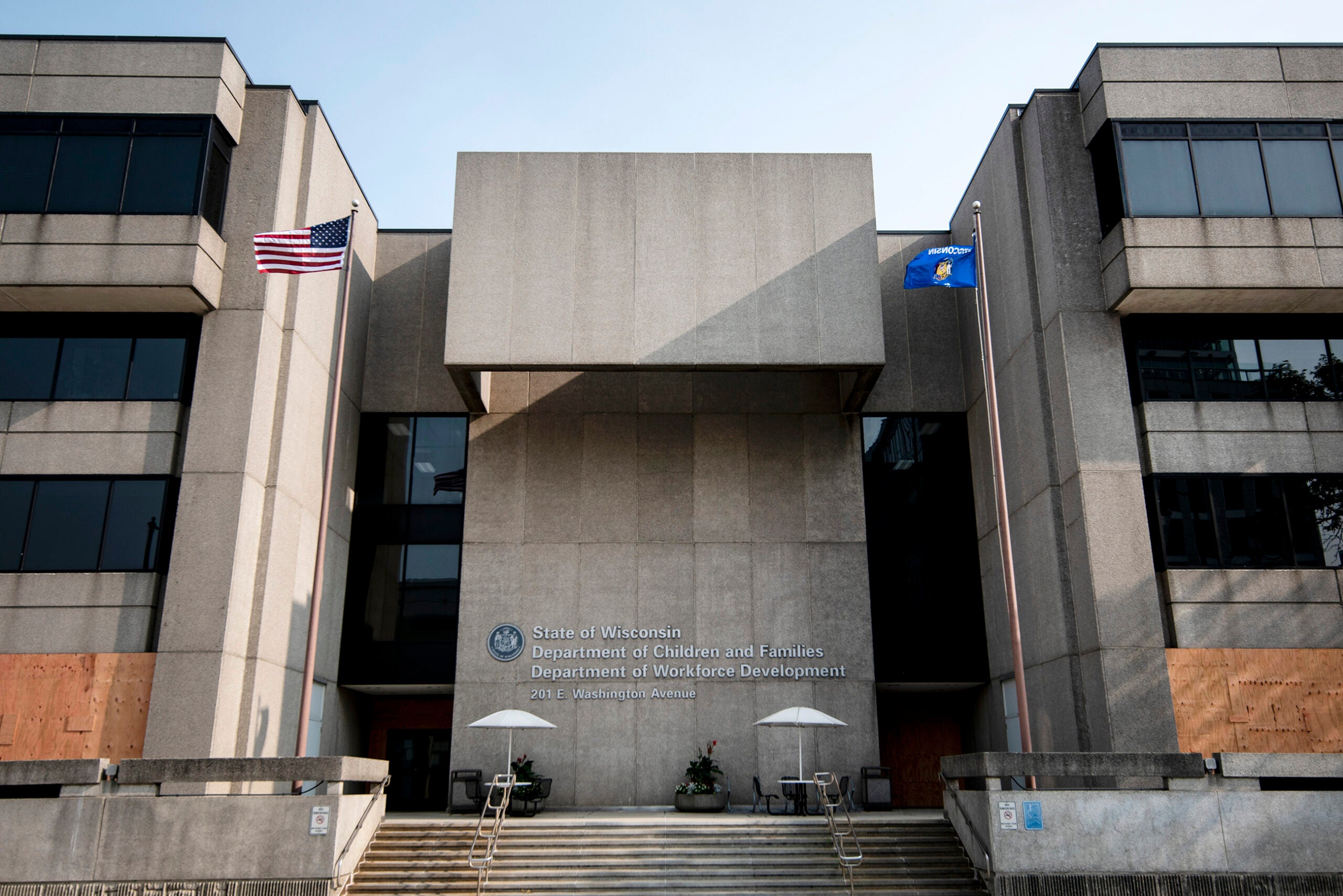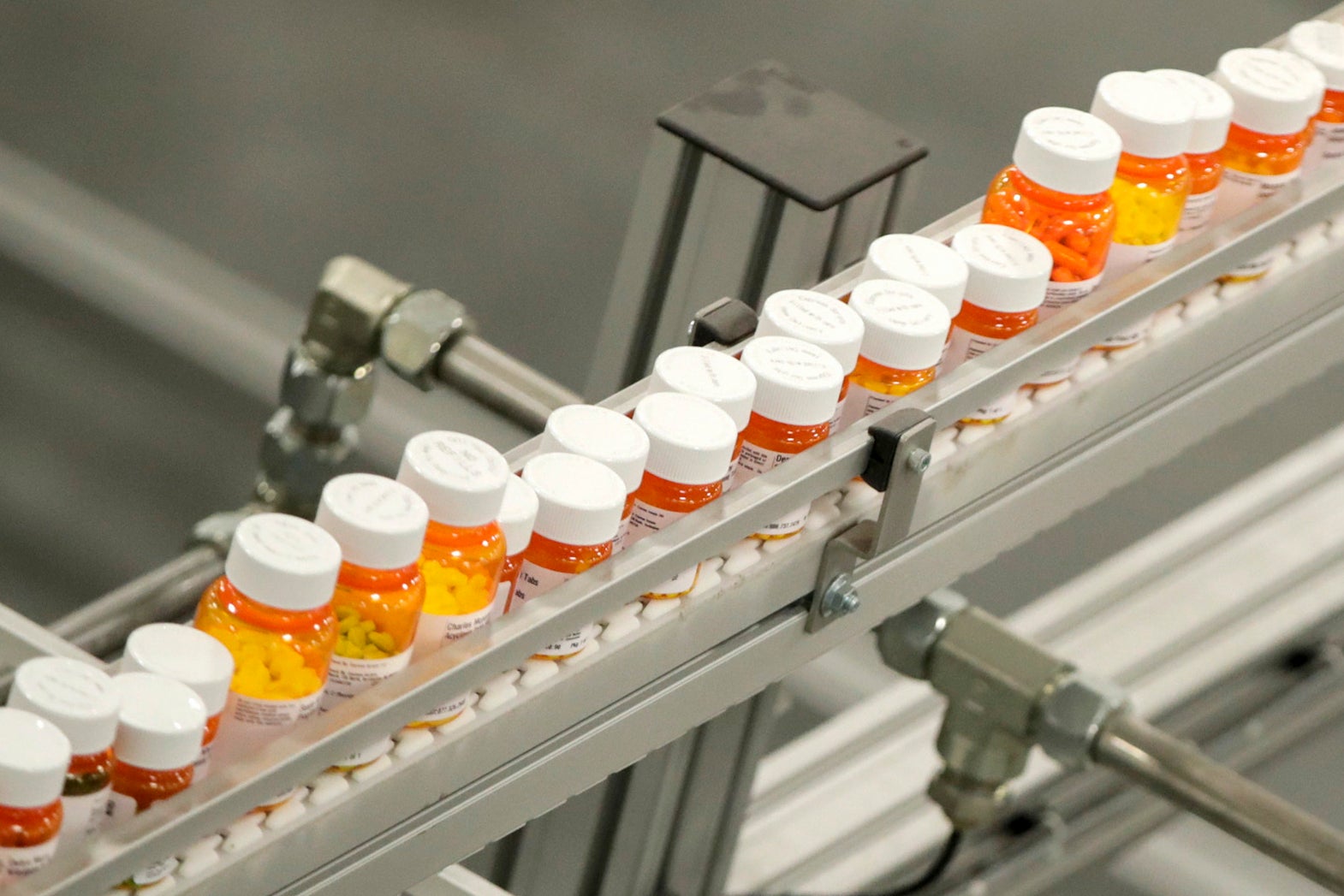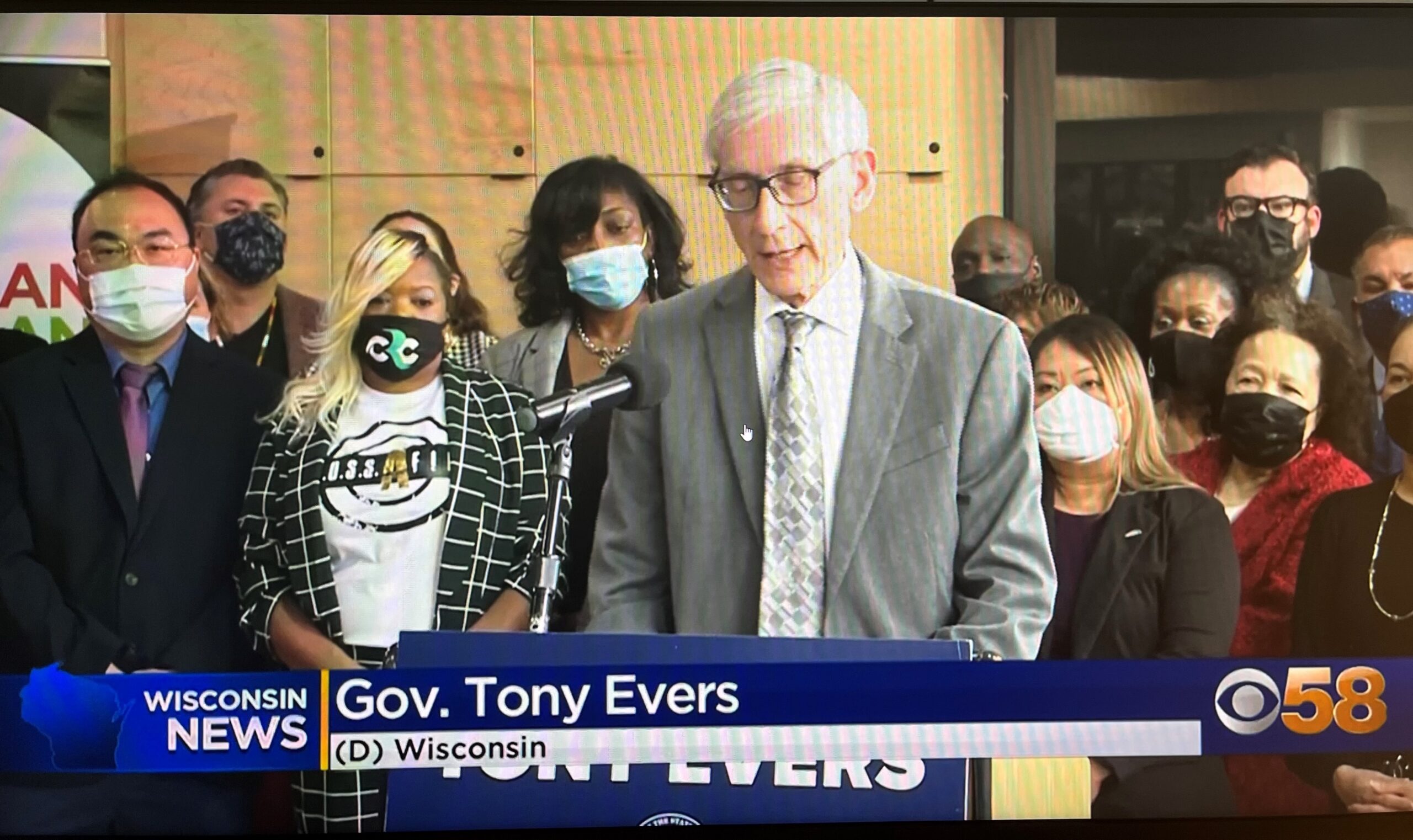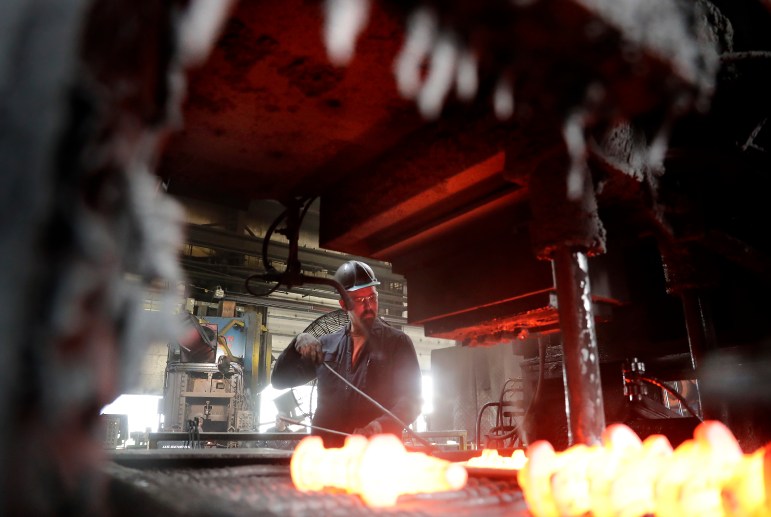The Lost Wages Assistance (LWA) program supplements weekly unemployment benefits for qualified unemployment insurance recipients. President Donald Trump unveiled the program in early August, a few weeks after an earlier unemployment supplement from Congress expired.
Gov. Tony Evers waited nearly three weeks to apply for the program, and Wisconsin was approved Sept. 2.
On Oct. 15, nearly three months after the previous federal supplement expired, DWD began sending out payments under the program to out-of-work Wisconsinites.
Stay informed on the latest news
Sign up for WPR’s email newsletter.
Since the program was announced, WPR’s WHYsconsin has received a lot of questions about it. Below is what we know about some of the biggest questions surrounding the program and how it will work in Wisconsin.
How Much Will The Supplement Be?
In Wisconsin, the LWA unemployment supplement will be $300, meaning those that qualify for the program will get $300 added to their weekly unemployment benefits. The $300 will be in addition to whatever amount someone receives in state-level benefits, which max out at $370 a week.
DWD confirmed in a press release Oct. 21 that the Federal Emergency Management Agency (FEMA), which funds the program, will not provide funding for more than six weeks of the $300 supplement. That means eligible Wisconsinites stand to receive a maximum of $1,800 once benefits start flowing to recipients.
Why Isn’t Wisconsin Getting $400?
After some early confusion when Trump announced the program in August, the Trump administration gave states two options: either get a $300 weekly supplement funded entirely by the federal government; or a $400 supplement where the federal government would pay for $300 and states would pay the other $100.
When Evers applied for LWA in late August, he chose the first option that would provide a $300 supplement funded entirely by the federal government. Evers has not explicitly said why he opted for the $300 supplement, but many state governments, including Wisconsin, are facing budget challenges with declining tax revenues related to the COVID-19 pandemic.
Since the start of the pandemic, Evers has directed state agencies to cut state spending twice — once in April and again in July.
Who Is Eligible For The $300?
In order to qualify for the $300 supplement, an unemployment recipient has to meet two basic criteria: they have to be receiving at least $100 in weekly state-level unemployment benefits, and they have to certify that they are partially or completely unemployed because of disruptions related to COVID-19.
The supplement will be added to weekly benefits for eligible recipients who are currently receiving regular unemployment benefits: Pandemic Unemployment Assistance (PUA), which provides benefits for those who don’t typically qualify for unemployment like self-employed people and independent contractors; Pandemic Emergency Unemployment Compensation (PEUC), which provides an additional 13 weeks of benefits to those who have exhausted their regular benefits; and, according to an Oct. 21 press release from DWD, Trade Readjustment Allowance (TRA), a federal program that covers some living expenses for unemployed workers whose jobs have been lost because of competition related to foreign trade, like steelworkers, and who are in training or school full-time.
When asked why the Trump administration excluded those unemployment recipients receiving less than $100 in weekly benefits, the administration said the requirement was there to protect against fraud. Multiple unemployment insurance experts have said they don’t understand that explanation.
Michele Evermore with the left-leaning National Employment Law Project previously said it was particularly confusing because the requirement leaves out people receiving the least amount of unemployment benefits when fraudsters often impersonate people making the maximum benefit so that they can collect the most money.
Many experts pointed to the rushed way the program was put together as a possible explanation for the requirement.
The Wisconsin Department of Workforce Development (DWD) estimates 15,000 Wisconsinites would have been eligible to receive this extra money if not for that requirement. Experts have said that many of those individuals are tipped workers and among the poorest in the unemployment system.
Do I Need To Do Anything To Get The Supplement?
There is no formal application for LWA the way there is with other unemployment programs. DWD will go through its system, and notify those who are eligible for the program based on LWA’s program requirements.
Those who are eligible and would like to receive the money are, however, required to certify that they are partially or completely unemployed due to disruptions caused by COVID-19. Recipients must answer “yes” to that question to receive the supplement. For many, the yes or no question will come via DWD’s online web portal.
Recipients who were prompted to answer this question in early- to mid-September were also asked to acknowledge they may have to pay the money back if Congress passed another unemployment supplement that replaced LWA. The note confused many, and DWD said Sept. 14 it was removing the language from its website. You can find more details on this under the section “Will I Have To Pay It Back?”
When Will I Get The $300?
Approximately 120,000 recipients in Wisconsin will receive payments by Oct. 23, with the first large wave of payments sent out Oct. 20, according to DWD. The department began sending out payments to smaller rounds of recipients Oct. 15.
Previously, former DWD Secretary Caleb Frostman estimated it would be early to mid-October before unemployment recipients started receiving the $300 supplement. Frostman said the department needed four to five weeks to build the computer infrastructure for the program, a process known as “programming.” He also said DWD needed about two weeks to test the program.
The delay amounted to a long wait for the tens of thousands of Wisconsinites eligible for the program. A previous $600 unemployment supplement from Congress ended in Wisconsin on July 25, and officially expired under federal law on July 31.
Frostman blamed the delays on the agency’s outdated computer system, which he said only allows DWD to set up one new program at a time on top of other logistical and technical hurdles. Evers fired Frostman Sept. 18, citing the long delays for Wisconsinites waiting to receive unemployment.
Ultimately, recipients went nearly three months with only state-level benefits, which max out at $370 a week.
How Long Will It Last?
DWD said in a press release Oct. 21 that FEMA will not provide funding for more than six weeks of the supplement. In Wisconsin, that means recipients stand to receive as much as $1,800 under the program in total.
In early September, FEMA clarified that six weeks of funding would be provided to many states, including Wisconsin, putting to rest earlier concerns from unemployment insurance experts and advocates that, while Wisconsin slowly programmed LWA, the FEMA disaster relief fund where the LWA’s funding is drawn from could be depleted.
Will I Have To Pay Back The $300?
Some of those eligible for LWA have expressed concern about having to pay money received under the program back. That’s because some potential recipients — those who were prompted to certify whether they are partially or completely unemployed because of disruptions related to COVID-19 in early to mid-September — were asked by DWD to acknowledge they may have to pay the money back “if another pandemic program is enacted by Congress to replace the Lost (Wages) Assistance program.”
On Sept. 14, DWD told WPR via email it will not ask those receiving the $300 supplement to pay the money back unless “otherwise required by law or based on future guidance from the federal government.”
Separately, FEMA told DWD officials on Sept. 11 that federal guidance requesting the money be paid back is unlikely.
Payments under LWA will be backdated to Aug. 1. A DWD spokesperson said the note about possible repayment was added to account for the possibility that Congress could pass a separate unemployment insurance supplement that was also backdated to Aug. 1, creating duplicative benefits.
The agency said the language was included in an effort to be transparent with recipients about that possibility, and was reflective of the “uncertainty and confusion created by the federal government.”
On Sept. 14, a spokesperson said DWD was removing the language from its website.
But, according to interviews with unemployment recipients and multiple posts in online support groups for those navigating the unemployment system in Wisconsin, some recipients may have answered “no” to the question in error, making them ineligible for the benefits. They did so out of confusion over what the language meant and out of fear of having to repay the money at a time when funds are tight.
A DWD spokesperson said Sept. 15 that the agency would reach out to those eligible for LWA in an attempt to catch those that may have mistakenly made themselves ineligible. The agency also said those who wish to change their answer can call DWD’s help center and ask a staff member to change it for them.
On Oct. 20, DWD said nearly 11,000 individuals, or more than a quarter of those who initially answered “no” to the question, ultimately changed their answer after the wording was removed to make themselves eligible for the payments.
What Happens After I Get My LWA Payments?
DWD confirmed in a press release Oct. 21 that FEMA will not provide more than six weeks of funding for the program. Once payments for the full six weeks have been made to recipients, there will be no other payments under LWA.
Some recipients will get LWA payments in one large lump sum, and others will get multiple payments, according to the department. After the final payment is made, many recipients will begin receiving their state-level benefits again, as they did when the $600 supplement from Congress expired.
That could change if Congress and Trump agree on another round of stimulus spending, including enhanced unemployment benefits. As of Oct. 21, talks between lawmakers and the White House remained at an impasse.
Have more questions about LWA or unemployment insurance in Wisconsin? Send them to us in the form below.
Editor’s note: This story was updated to clarify the first large wave of LWA payments was sent out Oct. 20 and DWD began sending payments to smaller groups of recipients Oct. 15. This story will be continuously updated as developments related to the Lost Wage Assistance program occur.
Wisconsin Public Radio, © Copyright 2024, Board of Regents of the University of Wisconsin System and Wisconsin Educational Communications Board.




